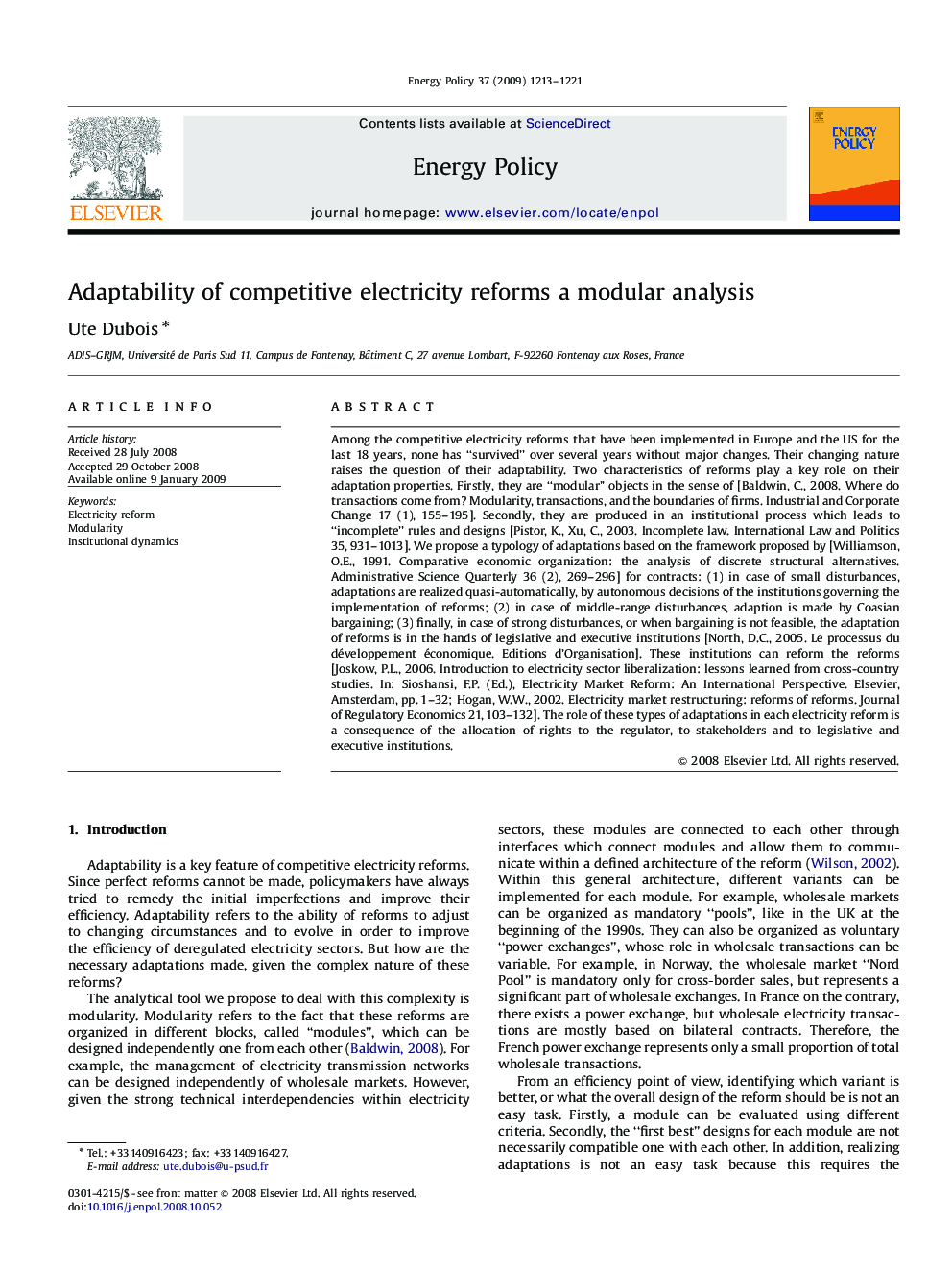| Article ID | Journal | Published Year | Pages | File Type |
|---|---|---|---|---|
| 996961 | Energy Policy | 2009 | 9 Pages |
Among the competitive electricity reforms that have been implemented in Europe and the US for the last 18 years, none has “survived” over several years without major changes. Their changing nature raises the question of their adaptability. Two characteristics of reforms play a key role on their adaptation properties. Firstly, they are “modular” objects in the sense of [Baldwin, C., 2008. Where do transactions come from? Modularity, transactions, and the boundaries of firms. Industrial and Corporate Change 17 (1), 155–195]. Secondly, they are produced in an institutional process which leads to “incomplete” rules and designs [Pistor, K., Xu, C., 2003. Incomplete law. International Law and Politics 35, 931–1013]. We propose a typology of adaptations based on the framework proposed by [Williamson, O.E., 1991. Comparative economic organization: the analysis of discrete structural alternatives. Administrative Science Quarterly 36 (2), 269–296] for contracts: (1) in case of small disturbances, adaptations are realized quasi-automatically, by autonomous decisions of the institutions governing the implementation of reforms; (2) in case of middle-range disturbances, adaption is made by Coasian bargaining; (3) finally, in case of strong disturbances, or when bargaining is not feasible, the adaptation of reforms is in the hands of legislative and executive institutions [North, D.C., 2005. Le processus du développement économique. Editions d’Organisation]. These institutions can reform the reforms [Joskow, P.L., 2006. Introduction to electricity sector liberalization: lessons learned from cross-country studies. In: Sioshansi, F.P. (Ed.), Electricity Market Reform: An International Perspective. Elsevier, Amsterdam, pp. 1–32; Hogan, W.W., 2002. Electricity market restructuring: reforms of reforms. Journal of Regulatory Economics 21, 103–132]. The role of these types of adaptations in each electricity reform is a consequence of the allocation of rights to the regulator, to stakeholders and to legislative and executive institutions.
